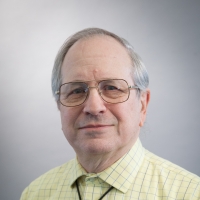Gerald Sussman, MIT Panasonic Professor of Electrical Engineering and CSAIL member, recently received the Institute of Electrical and Electronics Engineers (IEEE) Educational Activities Board Major Education Innovation Award. Sussman earned the honor for “inspiring students of computer science, engineering, and science with his ‘structure and interpretation’ approach, books, and MIT courses” according to the board. Established in 1984, the Major Education Innovation Award recognizes individuals within IEEE who have made a visible impact beyond their environment.
From 1980 to 2007, Sussman taught the introductory programming course 6.001, “Structure and Interpretation of Computer Programs.” Working with MIT professor Hal Abelson and his wife Julie Sussman, they also co-authored a textbook of the same name in 1984. Their work details computing fundamentals, such as programming language design, abstraction, and recursion, using the Scheme programming language, which Sussman co-invented in 1975. Sussman and CSAIL associate member Jack Wisdom later applied the same computational approach to physics, teaching “Structure and Interpretation of Classical Mechanics” and publishing a textbook in 2001. They still teach the course at MIT using the second edition of their text.
Sussman once reflected that the 6.001 class was remarkable because “a course invented then [the 80s] is still so dead on in what matters." Beyond MIT, its textbook has inspired classes at universities around the world with translations in French, German, Chinese, Polish, and Japanese. The introductory course’s text is referred to as the “Wizard Book” among programmers. Sussman’s work on it also earned him the Association for Computing Machinery’s (ACM) Karl Karlstrom Outstanding Educator Award in 1990 and the Bose Award for Excellence in Teaching in 1992.
Sussman’s career at MIT is extensive, dating back to 1964 when he began researching artificial intelligence at the institute. He later applied AI to computer-aided design (CAD) for very large-scale integration, or the process of combining thousands or even millions of transistors onto a microchip. His ideas for AI-based CAD technology were later implemented into Scheme chips and other special-purpose computers. Sussman’s other contributions to artificial intelligence research include problem-solving by debugging almost-right plans, propagation of constraints applied to electrical circuit analysis and synthesis, and various language structures for expressing problem-solving strategies.
The MIT professor’s list of contributions beyond artificial intelligence is eclectic: he helped contribute to the foundations of synthetic biology, has engineered telescopes, and applied computational descriptions when teaching about electrical circuits and signals and systems. Sussman’s current research focuses on understanding the problem-solving strategies used by scientists and engineers, aiming to automate and formalize their processes to improve the educational methods used in both fields.
The Educational Activities Board Major Education Innovation Award is among many honors for Sussman, who is also an IEEE life fellow, a National Academy of Engineering member, and a fellow of the American Academy of Arts and Sciences, the American Association for Artificial Intelligence, the ACM, and the American Association for the Advancement of Science. Additionally, he is a bonded locksmith, a life member of the American Watchmakers-Clockmakers Institute, and a member of the Massachusetts Watchmakers-Clockmakers Association, Amateur Telescope Makers of Boston, and the American Radio Relay League.
He will receive his latest honor this November in Washington, DC.


